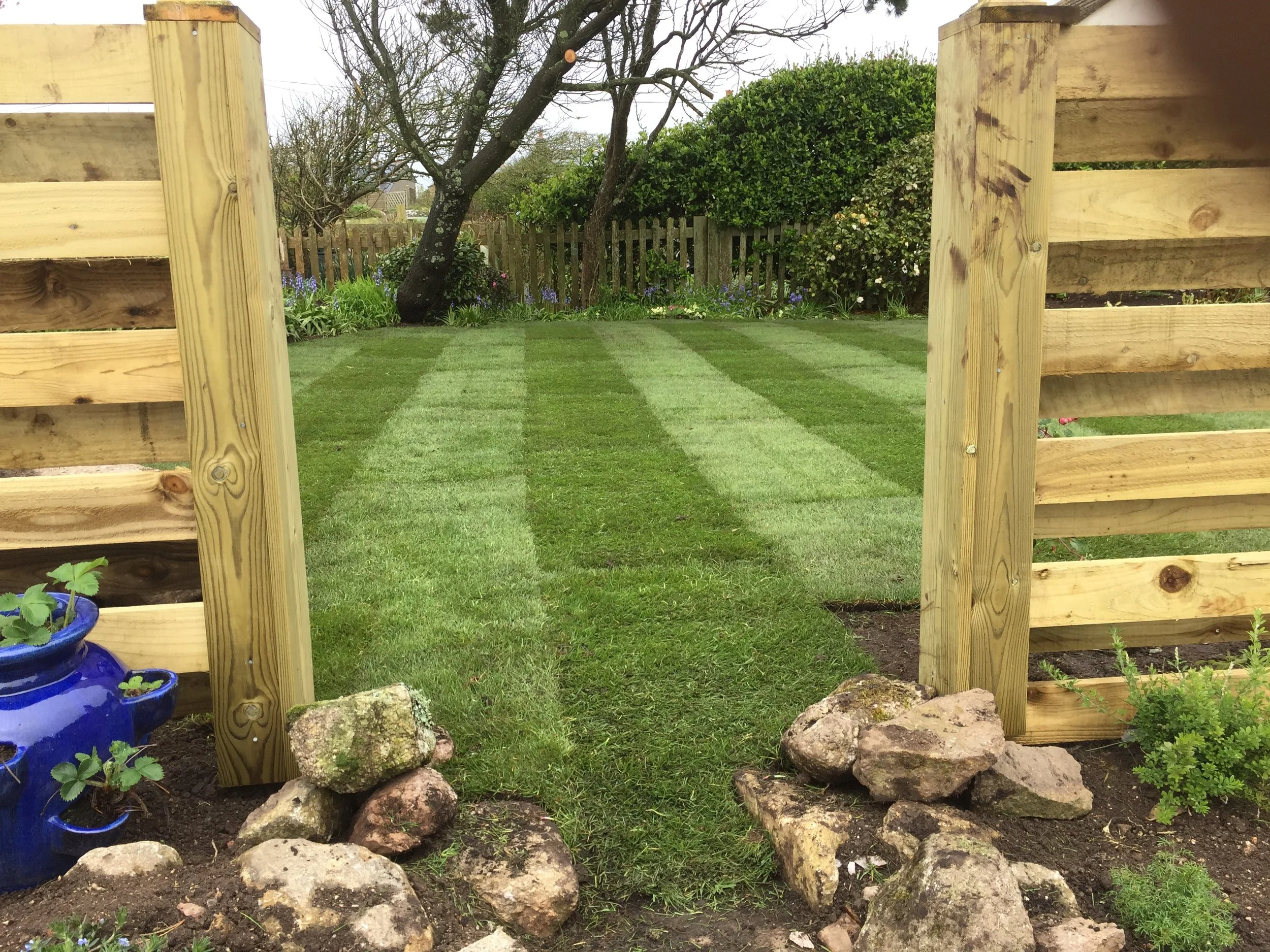If you have purchased turf and would like to lay it yourself, we offer a simple how to guide, including important maintenance tips and how to look after your newly laid turf.
Laying turf
A square metre roll measures roughly 610mm x 1640mm. Very little tools are required to lay your new turf; a wheelbarrow, a rake and spade, some scaffolding planks, and some way of watering your turf.
Turf must be rolled out within 24 hours in the Autumn/Winter, and immediately in the Spring/Summer.
It is best to lay your turves along in a straight row, butting closely end to end. On subsequent rows, stagger the joints in brickwork fashion.
Scaffolding planks should be placed on newly laid turf for walking along and working from. Lightly firm down the turves to ensure good contact between the soil and the underside of each turf. The head of a rake held vertically and pressed against the turf is ideal. Never use a roller on freshly laid turf.
Laying turf in heavy shade
·Turf responds to conditions in which it is placed. If turf is grown in heavy shade, it will lose its density and colour and become sparse. Installing turf immediately next to buildings, tall hedges or directly under trees or a canopy will cause the turf to become thinner. Trees will also compete for water. Please note, that we will not replace turf affected by heavy shade, nor will we replace any turf damaged by poor maintenance.
Caring for your lawn
·Watering – Unless there is heavy rain falling immediately after laying, you should NEVER leave newly laid turf un-watered. Right after laying turf, it will require plenty of water for at least 10 days.
·It is really important to give all of the roots a really good soaking. Grass only takes in water through the turf into the underlying soil. Watering must be repeated until the turf has established – this is important to establish a healthy lawn.
·Please note, we will not replace turf due to insufficient watering, as this is something beyond our control.
·Mowing is the second most important act of maintenance. You may start to mow your lawn at least 10 days after laying the turf, providing it can be done without disturbing the rooting process. Most people leave the grass height at around 1 inch (25mm) Do not mow any shorter than this, as it can cause significant problems.
·The three main points about mowing are; Don’t delay! This may cause disease. Mow your lawn as recommended above. Also, always remember to keep off the grass for the first 10 to 14 days after its first been laid. Also, don’t let the grass grow too long – if this does happen, reduce the height gradually, never removing more than 1/3 of the grass height at any one time. It is also very important to keep your lawn mower in a good condition with a sharp blade to ensure a clean cut.
Extra tips
Turf is a perishable living product. Each roll consists of thousands of individual grass plants. Turf must be laid in a time frame that is consistent with the guidance given. If the time frame guidance given is not achievable, please postpone your order until it is.
Rolled up turf acts like a blanket retaining heat whilst at the same time depriving the grass of air and light. Within the time periods set out earlier, this shouldn’t be a problem. However, if this happens in very hot weather, and there is any delaying laying the turf, it may suffer from heating, which can kill the turf. It is essential that all preparation is complete before the turf arrives and that the laying begins immediately on pre-watered soil.
Toadstool in turf
When conditions are right for them, toadstools may appear in turf whether long established or recently laid. Generally, they are harmless, but they should not be eaten. They occur because of a combination of warm and wet conditions. Removing toadstools is easy, but they may persist for a time. Remove them by picking them off (wearing gloves), however if there is a high volume of them, they can be mown off with a box on a lawn mower in order to collect them. Following a good mowing regime should help reduce the frequency of the appearance of toadstools. Also, sharp frosts tend to reduce toadstool population. Please note, we will not replace any turf if toadstools appear, as this is something that happens beyond our control.
Fusarium
If laying the turf in Autumn/Winter months in cold conditions, you will need to be aware of a turf disease called Fusarium.
Our supplier does not harvest turf that has active fusarium. However, if the weather conditions are right, it can develop overnight. It is not an unusual disease, and although it can be unsightly it will not kill turf. Signs of recovery may not be noticeable until the growing season commences. Please note, we will not replace turf because of fusarium.

